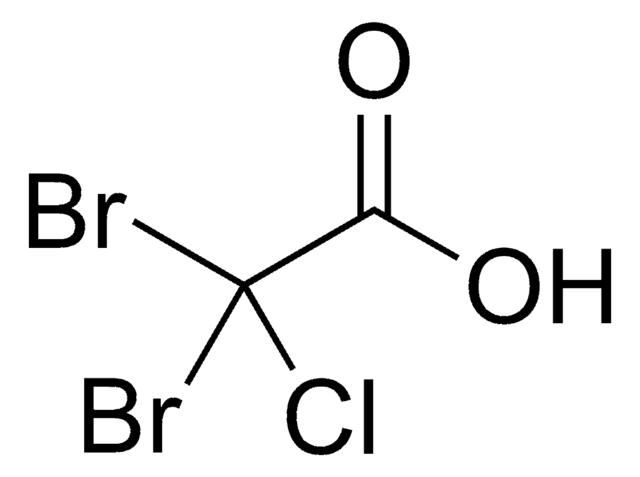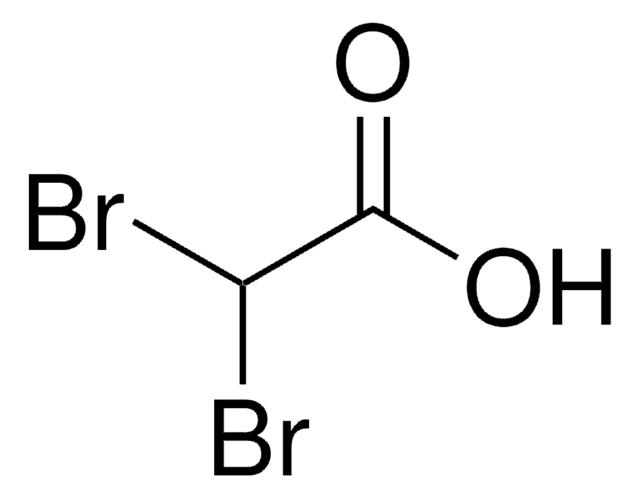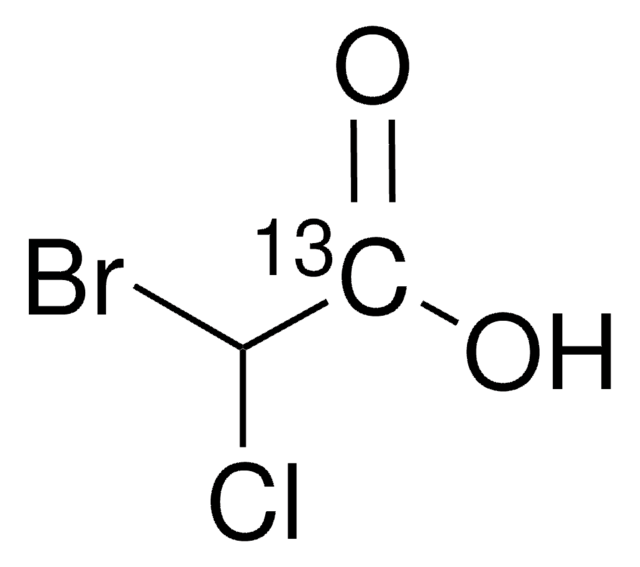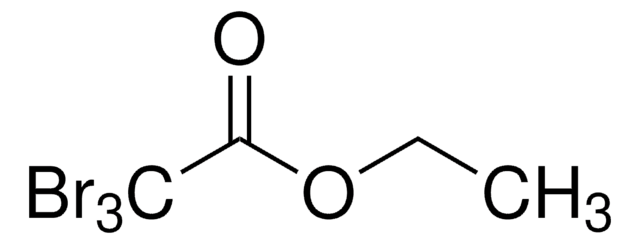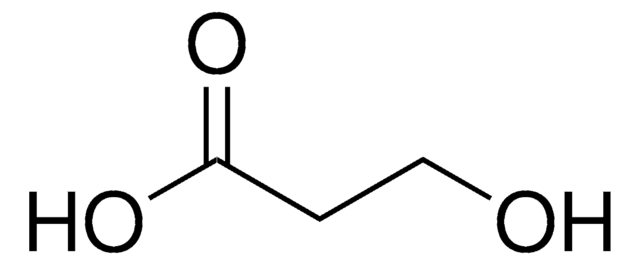T48208
Acide tribromoacétique
99%
Synonyme(s) :
2,2,2-Tribromoacetic acid
About This Item
Produits recommandés
Niveau de qualité
Essai
99%
pb
245 °C (lit.)
Pf
128-132 °C (lit.)
Chaîne SMILES
OC(=O)C(Br)(Br)Br
InChI
1S/C2HBr3O2/c3-2(4,5)1(6)7/h(H,6,7)
Clé InChI
QIONYIKHPASLHO-UHFFFAOYSA-N
Vous recherchez des produits similaires ? Visite Guide de comparaison des produits
Mention d'avertissement
Danger
Mentions de danger
Classification des risques
Skin Corr. 1A
Code de la classe de stockage
8A - Combustible corrosive hazardous materials
Classe de danger pour l'eau (WGK)
WGK 3
Équipement de protection individuelle
Eyeshields, Faceshields, Gloves, type P3 (EN 143) respirator cartridges
Faites votre choix parmi les versions les plus récentes :
Déjà en possession de ce produit ?
Retrouvez la documentation relative aux produits que vous avez récemment achetés dans la Bibliothèque de documents.
Notre équipe de scientifiques dispose d'une expérience dans tous les secteurs de la recherche, notamment en sciences de la vie, science des matériaux, synthèse chimique, chromatographie, analyse et dans de nombreux autres domaines..
Contacter notre Service technique